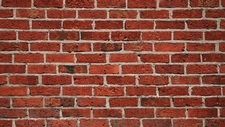Texture

TEKS Objective
The student will classify objects by observable properties of the materials from which they are made such as larger and smaller, heavier and lighter, shape, color, and texture.
Essential Understanding
The student knows that objects have properties and patterns.
Science Background
Texture: Fact Monster (website) - Provides a simple definition of “texture.”
Texture
Fact Monster, www.dictionary.factmonster.com
Texture from Touch: Scholarpedia (website) - This article discusses many aspects of texture and the science behind our sense of touch.
Signature Lesson
Make a Texture Variety Book: Education.com (website) - Students use the sense of touch to investigate the property of texture.
Make a Texture Variety Book
by Gail Morris, Education.com
Texture Tiles: Crayola (website) - Create “texture tiles” using a variety of unusual materials, such as tree bark, bricks, lace or screen.
- Supporting Lessons
- Extensions
- Assessment Ideas
- Literature Connections
- Related
TEKS - Additional Resources
Supporting Lessons
Five Senses: SEDL (PDF) - “Touch” is Lesson 4, page 24. Students learn that sense of touch helps us understand our world by allowing us to feel things, and learn their size, texture and shape.
Elaboration Lessons and Extensions
Fabric Collage: FOSSWEB (website) - Students create a collage using a variety of fabrics glued to paper.
Assessment Ideas
Give every student three objects, one each with a smooth, rough, and soft texture. Have students draw a picture in their science notebook of each object, and write several sentences describing how each object feels.
Literature Connections
My Hands. Aliki (ISBN-13: 9780064450966)
Texture. Bryant-Mole, Karen (ISBN-13: 9780382396212)
Spiky, Slimy, Smooth. Brocket, Jane (ISBN-13: 9780761346142)
Additional Resources
Friction Study: Kindergarten Science Lessons (website) - Students explore how the textures of different materials affect how fast or slowly a block covered in these materials will slide down a ramp. This is a nice introduction to experimental design for young learners.
Friction Study
Kindergarten Science Lessons, www.kindergarten-lessons.com
TEKS Navigation
Grade 1
User Information
Not Registered Yet?
Sign Up Today!
Need Assistance?
If you need help or have a question please use the links below to help resolve your problem.

Comments